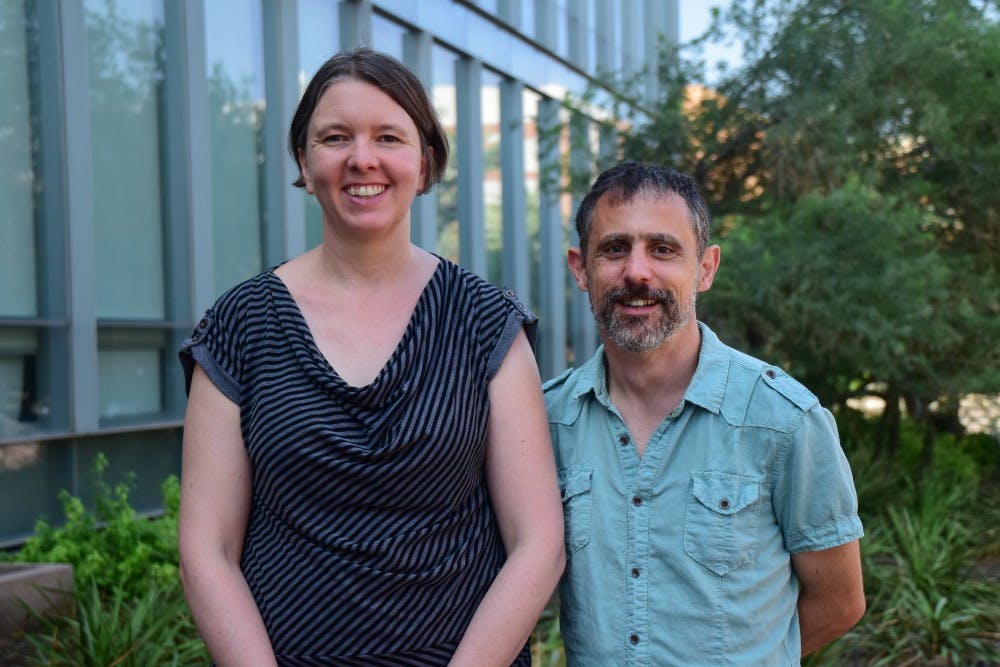The artist duo behind boredomresearch have been commissioned by the Arizona Cancer Evolution Center to create digital visualizations of cancer that will eventually be seen in the ASU Art Museum, a few of Arizona’s hospitals and more.
Visual artist Vicky Isley said the collaboration is still in the early stages, with the project estimated to be completed in 2020.
Boredomresearch, the collaboration between Isley and fellow London-based visual artist Paul Smith, uses technology to create art that depicts the mechanics of the natural world, according to their website.
She said the duo is excited to have their work be shown in a hospital context for the first time because they will be able to reach people and bring them some peace through their art.
Isley said they are hoping to look at this particular project from a societal angle. They want to represent the groundbreaking aspect of the research that is being done at ASU to look at cancer from a cultural rather than a clinical perspective.
Isley said that the research behind what they’re looking at involves a different philosophy for facing cancer.
“We don’t see ourselves as just making an illustration of the science,” Isley said. “We like to get more embedded in the research so that we understand the mechanics of that."
Athena Aktipis, an assistant professor in the ASU Department of Psychology, is the lab director and principal investigator of the Cooperation and Conflict Lab.
“Our hope is to bring artists in to do short residencies, so they can really immerse themselves in the science,” Aktipis said. “It really gives us the benefit of being able to talk to artists who think about things differently and ask different questions and who can help us move our work forward by pushing us in a direction we may not have thought of.”
Aktipis said that the aggressive imagery and language surrounding cancer may not be the most accurate way to view it.
“(Cancer) comes from us in a way. They’re our cells that are a part of our germline that get messed up," Aktipis said. "It’s something that is very scary, so it often activates this ‘get it out, eliminate it all’ kind of psychology, but cancer is not a unitary enemy that can just be defeated.”
Aktipis said that when this aggressive mentality is translated into how physicians treat cancer, the results are not always ideal.
“Once cancer has advanced, it can sometimes be impossible to actually eliminate all the cells," Aktipis said. "If we want to keep patients alive longer, sometimes the best strategy is not to go about it like you’re trying to completely eradicate an enemy, but instead think 'How can i approach this to keep the population of cancer cells down?'"
Smith said a goal of bordeomresearch is to communicate science to the wider population in ways that are visually engaging to the audience and might inspire the curiosity for a deeper understanding.
“We try and encourage a way of working that isn't so much art in the service of science but a mutual relationship between art and science,” Smith said.
Smith said looking at mutations, such as the cacti being studied in Aktipis's cancer research, from an artistic point of view is interesting because it shifts the focus away from an intense medical perspective.
“The culture ... ideas and ways of thinking about cancer relates to fear and health, but there (are) lots of richer ways that we can think about it,” Smith said.
Isley said boredomresearch hopes to capture the work that researchers are doing (in) changing the way cancer is perceived.
“When we think of a tumor, we don’t really think of it as a beautiful form, and I think trying to create some of that essence in this particular work will hopefully allow an audience to have a different interpretation,” Isley said.
Aktipis said that the art will have an opportunity to impact individuals affected by cancer because the art provides a physical way to understand the disease.
"Art can be really healing for people," Aktipis said.
Reach the reporters at chofmann@asu.edu and nesherwo@asu.edu or follow @chofmann528 and @thecolesherwood on Twitter.
Like The State Press on Facebook and follow @statepress on Twitter.




